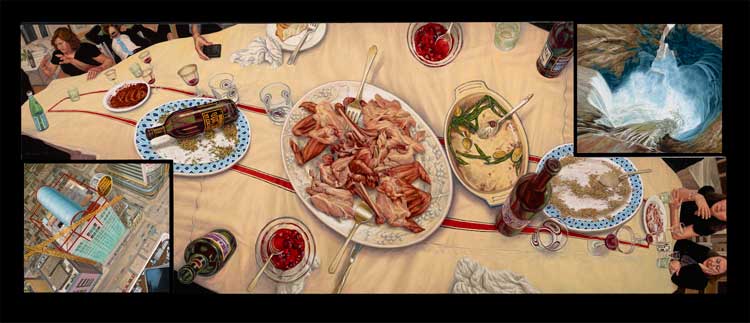The subject matter of several of my recent paintings derives from screwed-up iPhone panorama photographs. For centuries art linear perspective has ordered the space of paintings, determining how we look at an image. In panorama mode my iPhone-5 liberates the mind from this order, stitching together the world in a way similar to how humans actually conceptualize everyday scenes. In active viewing our eyes shift and move, and our brain weaves together a stable and unified world from the visual information being fed to it. The fluidity of the iPhone images—full of movement, twisted space and chopped up figures—is visually invigorating. These images bend space more organically than Cubism, and it amazes me how distorted the image has to be before we visually reject it as nonsensical. As a painter I felt I could appropriate this vitality and utilize the empathetic response that movement triggers in viewers. When first seen I want my work to operate on a preconscious level, before the analysis of language kicks in. The most powerful visual art kidnaps your mind before you think.
Funnyman’s Wake (2013, oil on panel, 24 x 63 inches, triptych) stitches together two iPhone images, looking down the same table, in the same direction, with the same characters, but a few minutes apart. I shifted the perspective of the images still further, allowing the objects to remain wobbly, but not outrageously so. This instability animates the objects, bringing them to life and allowing them to bob along the red “tracks” of the table’s design. Symbolism within the piece relates to James Joyce’s Finnegan’s Wake. Finnegan’s wife laid him on the table at his own wake, to be eaten by guests. But he disappeared.
Guest Lecture: F. Scott Hess

F. Scott Hess, Funnyman’s Wake, 2013, Courtesy Koplin Del Rio Gallery.


